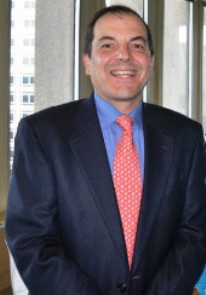Trading wound down after the markets experienced a change in sentiment – which could be a prelude to fast approaching month-end trading patterns.
With the Federal Reserve rate hike now a distant memory in traders rear window, the market began to look at things differently. Both the U.S. and global markets experienced a classic risk reversal trade last week, Tuesday, as investors repriced the probability of a reduction in taxes. Investors took profits and reduced their risk exposure by knocking the Dow down 1.14% and the S&P 500 by 1.24% on Tuesday. Seems like with three months of a Trump Administration and action by the Fed caused traders to re-think their appetite for risk.

The S&P 500 and Dow Jones Industrials ended their historic streak of 110 sessions without a 1% decline, began Larry Peruzzi, managing director, international equities sales/trading at Mischler Financial Group. The economic front was largely void of any market moving numbers.
As last week drew to a close, more uncertainty was created as the House GOP leaders looked to vote on Friday on their health-care bill while not knowing for sure they have enough votes to pass it, Peruzzi added, and that uncertainty rattled the markets.
Further evidence of the risk reversal trade can be seen in golds trading action as the precious metal is up 3.25% over the last 2 weeks, he continued. With the Feds rate hike behind us and the next meeting not until May 3rd and first quarter earnings still a few weeks away, investors will continue to ponder their risk tolerance in these highly partisan political times, Peruzzi said.
Trading on U.S. equity exchanges reflected the prior weeks data deluge and change in sentiment as volume climbed to a healthy 7.52 billion shares for the week ended March 24, moving higher from the 6.78 billion shares per day for the week ended March 17, according to Bats Global Markets data.
Data and Talk on Tap
This week will be one for the talking heads. Everyday there is one or more Federal Reserve governors addressing the markets – a total of 12 speeches – but the highlight being Chairwomen Yellen speaking on Tuesday. Traders will be keeping their eyes and ears on the wires to see if any given an inkling of when and how much the next potential interest rate hike might be.
With the market drivers changing over the last couple of weeks, I think what the market and investors will be concentrating on is sentiment, spending and politics, said Pruzzi. Tuesdays March Conference Board consumer confidence and Fridays March Michigan sentiment readings should give us a good idea how the public views the economy while Wednesdays February pending home sales and Thursday 4Q personal consumption followed by Fridays February Personal spending will be a good indication of much the recent market rally has buoyed the consumption and spending.
Also, traders can be expected to focus on the political front – which remains divided by party lines and healthcare, immigration and a Supreme Court nominee are at risk.
As we watch a few key economic numbers and Fed speeches we will be closely monitoring the shenanigans out of Washington, Peruzzi added.
Lastly, the end of the week could see some volatility in the markets as Friday marks the end of the first quarter. Several traders told Traders Magazine that things could heat up as portfolio managers make their final and last minute adjustments to portfolio holding and cash levels after three months with a new Administration.
I would expect things to get busier as the week ends, said a New York floor trader. The market has seen a quarters worth of data and movement by the Fed, as well as what Trump is going to be politically – this could wind up being an inflection point for sentiment. Well see.
In other market news, the Securities and Exchange Commission (SEC) approved by unanimous vote to shorten the time it takes to process a trade down to two business days or T+2. The decrease in time is aimed to help reduce risk exposure to a variety of market forces – such as counterparty risk, credit risk and default risk.
Previously, trades were settled in three business days but in certain agreed instances, the settlement time frame could be longer or shorter depending on the trading partners. T+2 now standardizes the cycle. T+3 has been in effect for almost 15 years.
The settlement duration is defined as the time between when a trade is executed and cash/ownership of the security are transferred.
“It is finally time to say hasta la vista to the antiquated T+3 settlement cycle,” acting SEC Chairman Michael Piwowar said.
Also, Tim Lang, Chief Executive Officer of Red Bank, NJ – based Global Liquidity Partners, told Traders Magazine in an interview that all dark pools, based on his firms analysis, are clean.
GLP constantly checks and scorecards the quality of executions from each source of liquidity in the US equity market, explained Lang. In the past, we have disconnected certain sources because of detected gaming or toxicity.
Lang said that perhaps because of publicized fines or increased regulatory scrutiny in the space, it is his opinion – based on GLPs own internal studies – that each of the ATSs [Dark Pools] are clean.
We do not detect bad behavior in any of the dark pools, Lang said.
This Weeks U.S. Economic Indicators of Interest:
|
Monday |
Dallas Fed Manufacturing Survey Charles Evans Speaks Dennis Kaplan Speaks |
|
Tuesday |
International Trade Redbook Retail Sales Consumer Confidence Richmond Fed Manufacturing Index Janet Yellen Speaks Esther George Speaks Dennis Kaplan Speaks |
|
Wednesday |
New Home Sales Charles Evans Speaks Eric Rosengren Speaks John Williams Speaks |
|
Thursday |
Jobless Claims GDP Report Corporate Profits Loretta Mester Speaks Dennis Kaplan Speaks |
|
Friday |
Personal Income Chicago PMI Consumer Sentiment Neel Kashkari Speaks James Bullard Speaks |



